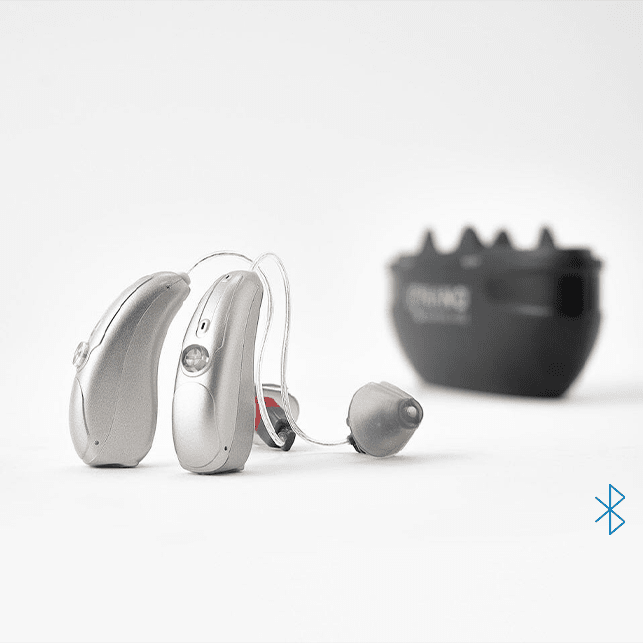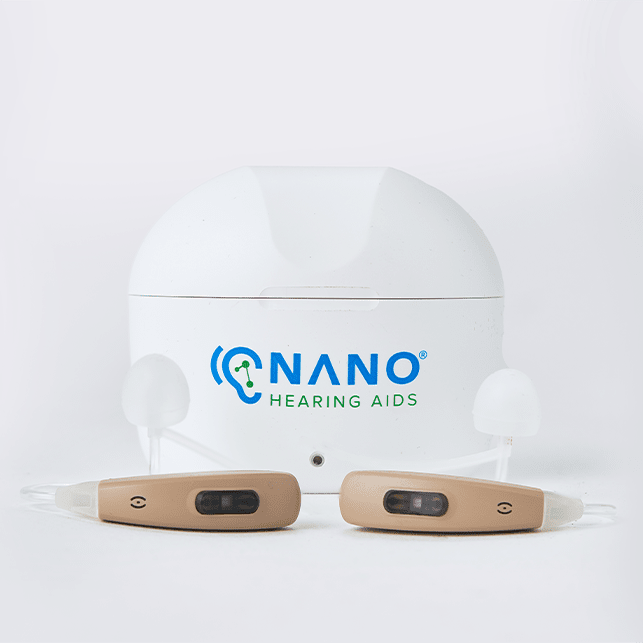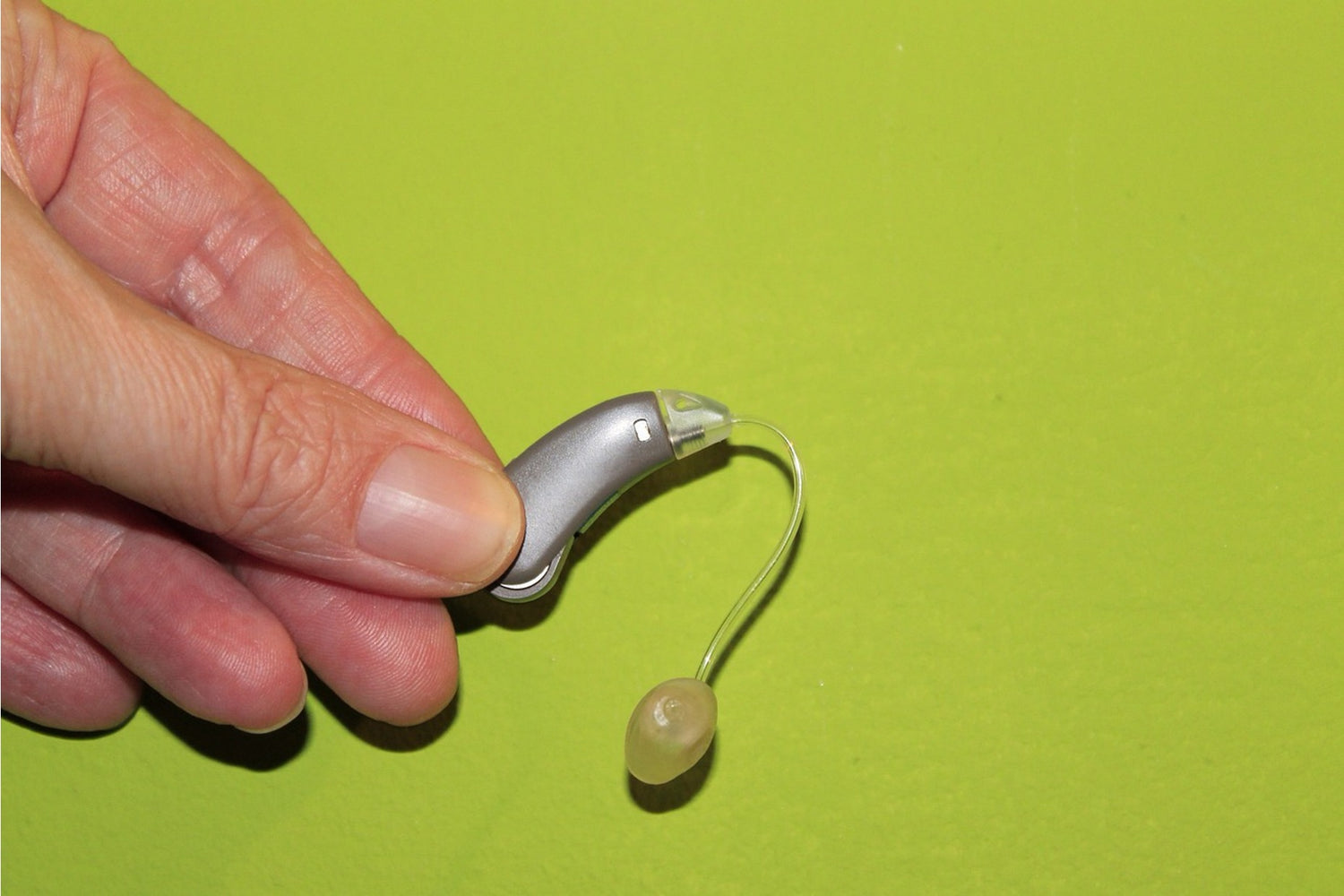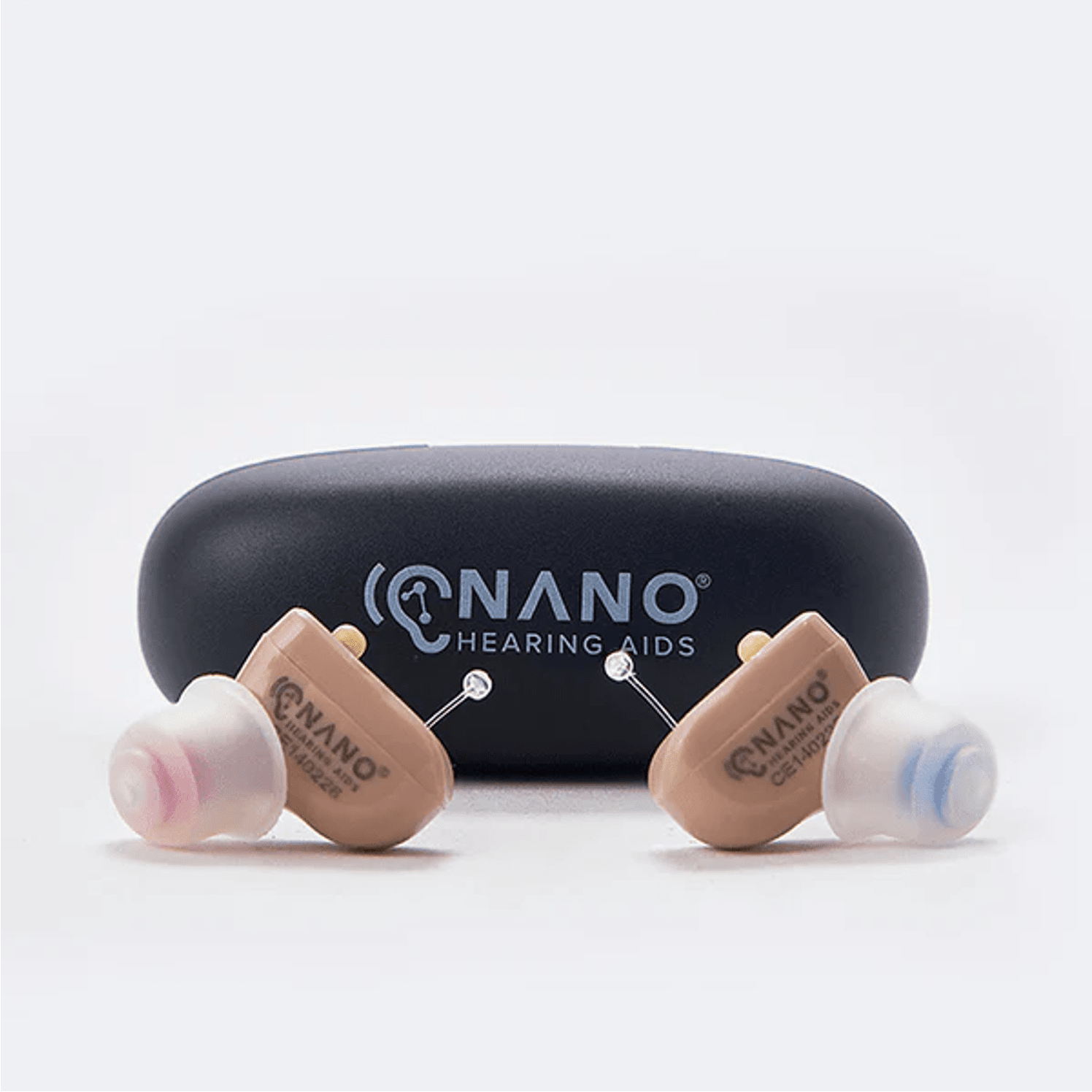Key Takeaways
- Disposable hearing aid batteries typically last between 3 to 7 days, depending on your hearing aid model and usage patterns.
- Signs that indicate it’s time to replace your battery include distorted sound, lower volume, and frequent beeping from your hearing aid.
- Get a new battery and a MultiTool, and ensure a clean, dry workspace before beginning the battery replacement process.
- Proper storage and handling, such as keeping batteries in their original packaging and avoiding moisture, can help extend their lifespan.
- Nano First Ear Pro CIC is a rechargeable hearing aid that eliminates the need for disposable batteries, offering up to 26 hours per charge with a portable magnetic charging case—making it a convenient alternative to traditional battery-powered devices.
NANO Hearing Aids are FDA-registered, Class I devices. Our OTC hearing aids are designed for individuals over 18 years of age with perceived mild to moderate hearing impairment. With prices starting at just $297, they offer a viable solution for those looking to improve their hearing without breaking the bank.
Changing Disposable Hearing Aid Batteries
Why Changing Your Battery Before They Die is Important
Maintaining clear, reliable sound depends on regular battery changes. Without a fresh battery, your hearing aid can't function properly, leaving you disconnected from the sounds around you.
The Basics of Disposable Hearing Aid Batteries
Disposable hearing aid batteries come in four common sizes: 10, 312, 13, and 675. These sizes are color-coded for easy identification:
- Size 10: Yellow tab
- Size 312: Brown tab
- Size 13: Orange tab
- Size 675: Blue tab
Common Signs Your Hearing Aid Battery Needs Replacing
- Distorted or unclear sound
- Lower volume even at higher settings
- Frequent beeping sounds
- Complete loss of sound
If you notice any of these signs, change your battery immediately to avoid missing important sounds and conversations.
Step-by-Step Guide to Changing Disposable Hearing Aid Batteries
Step 1: Gather Necessary Supplies
- New disposable hearing aid battery
- MultiTool for easier handling
- Clean, dry workspace
Step 2: Remove the Old Battery
- Open the battery compartment by gently pulling a small tab or sliding the cover.
- Remove the old battery using the magnetic tip of your MultiTool or your fingers—be cautious to avoid damaging the hearing aid.
Step 3: Insert the New Battery
- Remove the new battery from its packaging just before use—removing the pull tab activates the battery.
- Place the new battery into the compartment with the positive (+) side facing up—make sure it's seated properly to avoid connectivity issues.
Step 4: Close the Battery Compartment
- Close the battery compartment securely—make sure it snaps or clicks shut so you know it's properly sealed and ready for use.
Tips for Extending Battery Life
Avoid Moisture and Humidity
- Store hearing aids and batteries in a cool, dry place—moisture and humidity can shorten battery life.
- Use a hearing aid dehumidifier to remove accumulated moisture.
Store Batteries Properly
- Keep batteries in their original packaging until ready to use.
- Avoid extreme temperatures—heat and cold can reduce battery lifespan.
- Use a dedicated storage case to keep batteries safe and organized.
- Leave the battery drawer open when not using your hearing aids to prevent battery drain.
Use a MultiTool for Easier Handling
- A MultiTool simplifies battery changes with its magnetic tip - in our experience, it’s simply the best way to remove and insert batteries without dropping them.
- Some MultiTools also include a brush and pick for cleaning your hearing aid.
Ensure proper battery replacement to keep your hearing aids functioning optimally.
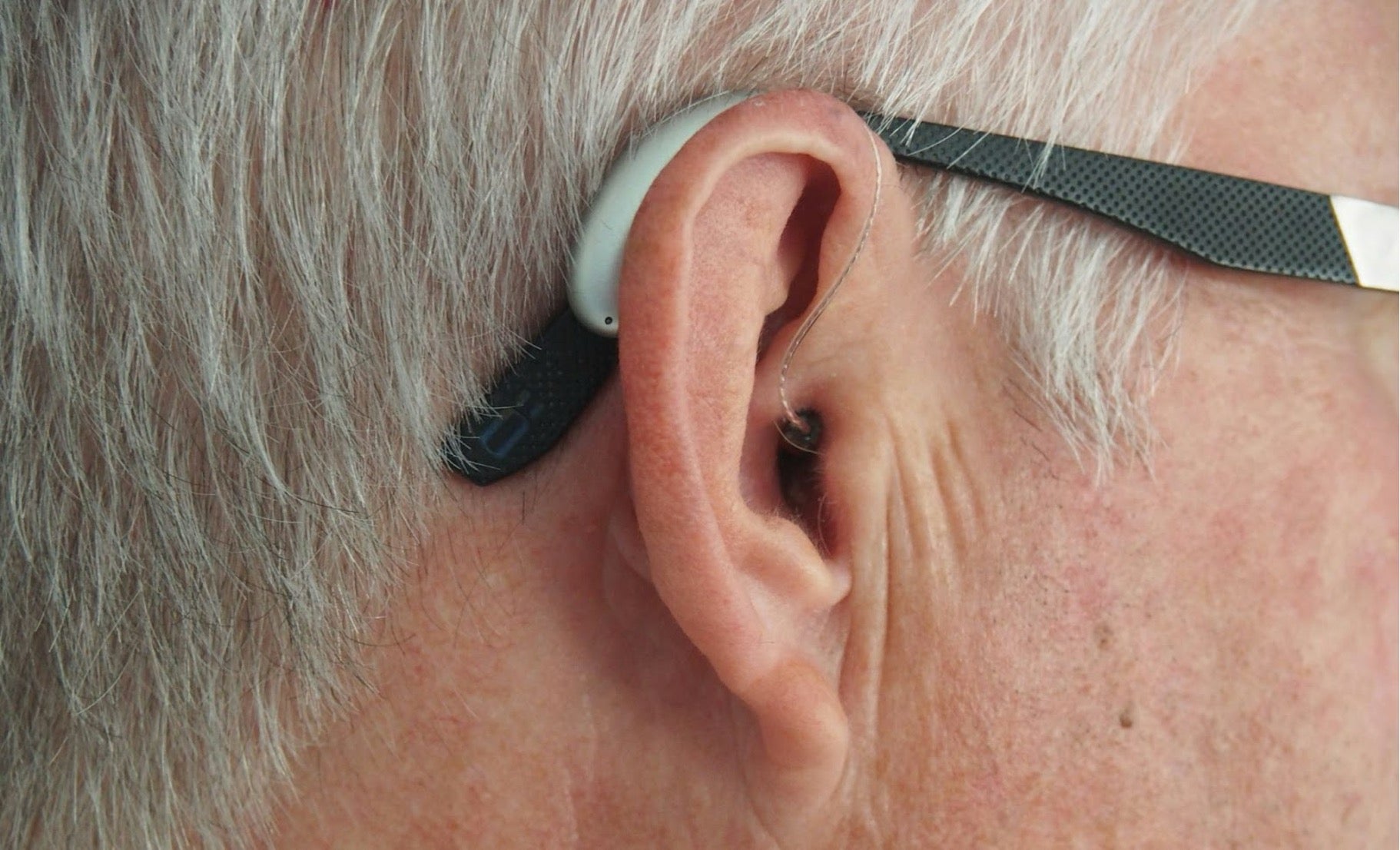
Troubleshooting Common Issues
Batteries Draining Quickly
- Check if you're storing batteries correctly—exposure to air, even with the pull tab on, can activate the battery and reduce its lifespan. Remove the tab only when ready to use.
- Review your hearing aid settings—high volume or features like Bluetooth can drain the battery faster. Consult your user manual or hearing care professional for advice on optimizing settings.
Distorted Sound or Lower Volume
- Low battery levels can cause distorted sound or lower volume—make sure the battery is seated correctly.
- Clean the battery contacts and hearing aid using a MultiTool or soft cloth.
- Check battery compatibility with your hearing aid model—using the wrong size or type can cause performance issues.
Hearing Aid Not Working After Battery Replacement
- Ensure the battery is inserted correctly with the positive (+) side facing up—close the battery compartment securely.
- If the hearing aid still doesn't work, try a different battery from the same pack to rule out a defective one.
- If the issue persists, contact your hearing care professional for further assistance.
Where to Buy and Dispose of Hearing Aid Batteries
Trusted Retailers and Online Stores
Purchase hearing aid batteries from reputable sources to ensure quality and reliability. Trusted options include:
- Local pharmacies
- Electronic retail stores
- Hearing aid clinics
- Online stores like specialized hearing aid websites and Amazon
Safe Disposal and Recycling Options
Hearing aid batteries contain materials harmful to the environment if not disposed of properly.
Use the following options for safe disposal:
- Battery disposal services at hearing clinics
- Battery recycling programs at local recycling centers or electronic stores
Important Safety Tips: Keeping Batteries Out of Reach of Children and Pets
Hearing aid batteries are small and pose a swallowing risk for children and pets.
Always store them securely out of reach. If a battery is ingested, seek medical attention immediately.
Why Choose Nano OTC Hearing Aids
Use a portable case to store extra batteries and keep your hearing aids ready for use.
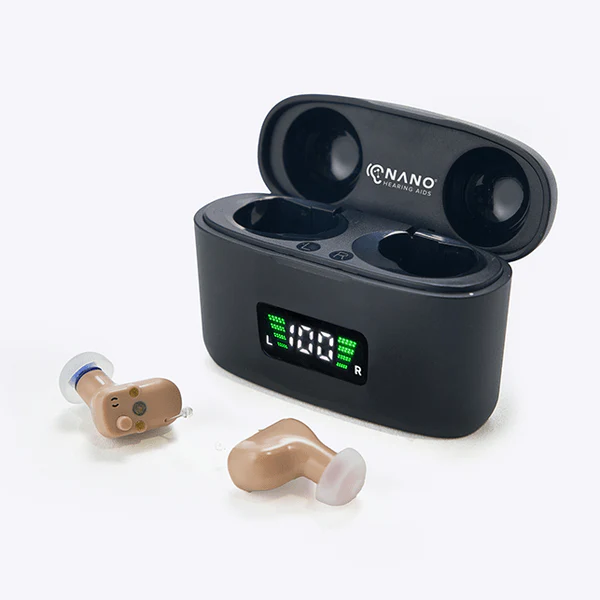
At Nano Hearing Aids, we’re developing user-friendly OTC hearing aids with advanced technology and user-friendly design.
With seven years of expertise in the hearing aid industry, we’ve developed models like the Nano First Ear Pro CIC that offer up to 26 hours of use per charge - so you can stay connected to the sounds that matter most throughout your day.
This model features an omnidirectional microphone, noise reduction technology, and feedback management, providing clear and comfortable hearing while perfectly aligning with the focus on battery life and efficiency discussed in this blog.
Frequently Asked Questions (FAQ)
How often should I change my hearing aid batteries?
Disposable hearing aid batteries typically need to be changed every 3 to 7 days, depending on usage and the specific model of your hearing aid. Monitor your device's performance and replace the battery when you notice any signs of low power. This ensures consistency with the commonly referenced 3-7 day timeframe.
Can I use any brand of battery in my hearing aid?
While many brands offer compatible batteries, it's best to use the brand recommended by your hearing aid manufacturer for optimal performance.
What should I do if my hearing aid is not working even after changing the battery?
If your hearing aid doesn’t work after replacing the battery, try the following:
- Check that you're using the correct battery type.
- Double-check that the battery is inserted with the positive (+) side up.
- Confirm that the battery compartment is securely closed.
- Try a different battery from the same pack.
- Clean the battery contacts and the hearing aid with a MultiTool or soft cloth.
If none of these steps resolve the issue, contact your hearing care professional for further assistance.
How do I know if my new battery is inserted correctly?
Check if the positive (+) side of the battery faces up when inserting it into the compartment. The battery should fit snugly, and the compartment should close securely. If your hearing aid doesn't turn on, double-check the battery orientation and try again.
Why Should I Choose Nano Hearing Aids?
Choosing Nano OTC Hearing Aids means selecting a product that combines advanced technology with user-friendly design.
Our Nano First Ear Pro CIC model, for instance, offers up to 26 hours of use per charge and features noise reduction technology along with feedback management.
With seven years of industry experience, Nano delivers reliable, high-quality hearing aids designed to meet your specific needs.

